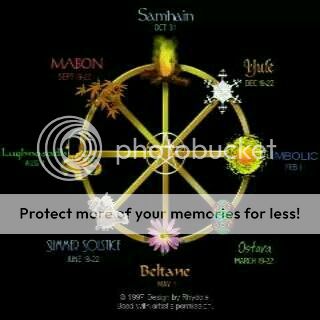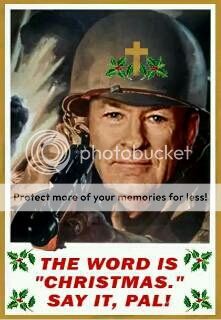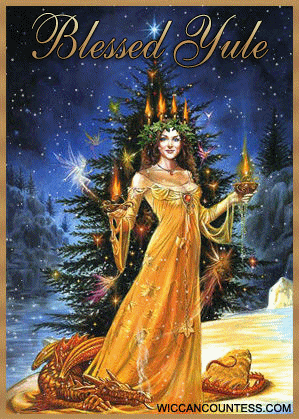CHRISTMAS: YULE, SATURNALIA WHATS THE DEAL?
(Part II - Yule]
This is the second part installment of my series on the history, rituals, customs, and myths surrounding the Winter Holiday Season, more specifically The Winter Solstice and the Ancient and Modern day Pagan Observances of it and how the Christian Celebration of Christmas is factored in and influenced by these earlier celebrations.
Part 1 - I can be found here: Christmas: Yule, Saturnalia, Winter Solstice; What's the deal?
YULE:
Yule is a winter festival identified with Christmas in modern times. The pagan Germanic peoples celebrated Yule from late December to early January on a date determined by the lunar Germanic calendar. When the Julian calendar was adopted in northern Europe, Yule was placed on December 25 to correspond with the date of Christmas.
The word "Yule" come from the same root as the word "jolly." Modern Yule traditions include decorating a fir or spruce tree, burning a Yule log, hanging mistletoe and holly branches, giving gifts, and general celebration and merriment. Yule celebrations at the winter solstice predate Christianity. Yule is a feast celebrated by sacrifice on mid winter night 12 January, according to Norwegian historian Olav Bø.
There are many references to Yule in the Icelandic sagas but few accounts of how Yule was celebrated beyond the fact it was a time for feasting. According to Adam of Bremen, Swedish kings sacrificed male slaves every ninth year during the Yule sacrifices at the Temple at Uppsala. 'Yule-Joy' with dancing continued through the Middle Ages in Iceland but was frowned upon after the Reformation. The ritual of slaughtering a boar on Yule survives in the modern tradition of the Christmas ham and the Boar's Head Carol.
On Yule Eve the best boar in the herd was brought into the hall where the assembled company laid their hands upon the animal and made their unbreakable oaths. Heard by the boar these oaths were thought to go straight to the ears of Freyr himself. Once the oaths had been sworn the boar was sacrificed in the name of Freyr and the feast of boar flesh began. The most commonly recognized remnant of the sacred boar traditions once common at Yule has to be the serving of the boar's head at later Christmas feasts.[8]
According to the medieval English writer the Venerable Bede, Christian missionaries sent to proselytize among the Germanic peoples of northern Europe were instructed to superimpose Christian themes upon existing local pagan holidays, to ease the conversion of the people to Christianity by allowing them to retain their traditional celebrations. Thus, Christmas was created by associating stories of the birth of Jesus of Nazareth, the central figure of Christianity, with the existing pagan Yule celebrations, similar to the formation of Halloween and All Saint's Day via Christianization of existing pagan traditions.
The confraternities of artisans of the ninth century, which developed into the medieval guilds, were denounced by Catholic clergy for their "conjurations" when they swore to support one another in coming adversity and in business ventures. The occasions were annual banquets on December 26,
"feast day of the pagan god Jul, when it was possible to couple with the spirits of the dead and with demons that returned to the surface of the earth... Many clerics denounced these conjurations as being not only a threat to public order but also, more serious in their eyes, satanic and immoral. Hincmar, in 858, sought in vain to Christianize them."[9]
Many symbols and motifs associated with the modern holiday of Christmas derive from traditional pagan northern European Yule celebrations. The burning of the Yule log, the decorating of Christmas trees, the eating of ham, the hanging of boughs, holly, mistletoe and others are all historically practices associated with Yule.
When the Christianization of the Germanic peoples began, missionaries found it convenient to provide a Christian reinterpretation of popular pagan holidays such as Yule and allow the celebrations themselves to go on largely unchanged, versus trying to confront and suppress them. The Scandinavian tradition of slaughtering a pig at Christmas is probably salient evidence of this. The tradition is thought to be derived from the sacrifice of boars to the god Freyr at the Yule celebrations. Halloween and aspects of Easter celebrations are likewise assimilated from northern European pagan festivals.
English historian Bede's Historia ecclesiastica gentis Anglorum contains a letter from Pope Gregory I to Saint Mellitus, who was on his way to England to conduct missionary work among the pagan Anglo-Saxons. Pope Gregory suggested that converting heathens would go easier if they were allowed to retain the outward forms of their traditional pagan practices and traditions, while recasting those traditions spiritually towards the Christian God instead of to their pagan "devils": "to the end that, whilst some gratifications are outwardly permitted them, they may the more easily consent to the inward consolations of the grace of God". [10]
_____________________ From: Wikipedia
The ceremonial Yule log was the highlight of the Yule time festivities. In accordance to tradition, the log must either have been harvested from the householder's land, or given as a gift... it must never have been bought. Once dragged into the house and placed in the fireplace it was decorated in seasonal greenery, doused with cider or ale, and dusted with flour before set ablaze be a piece of last years log, (held onto for just this purpose). The log would burn throughout the night, then smolder for 12 days after before being ceremonially put out. Ash is the traditional wood of the Yule log. It is the sacred world tree of the Teutons, known as Yggdrasil. An herb of the Sun, Ash brings light into the hearth at the Solstice.
A different type of Yule log, and perhaps one more suitable for modern practitioners would be the type that is used as a base to hold three candles. Find a smaller branch of oak or pine, and flatten one side so it sets upright. Drill three holes in the top side to hold red, green, and white (season), green, gold, and black (the Sun God), or white, red, and black (the Great Goddess). Continue to decorate with greenery, red and gold bows, rosebuds, cloves, and dust with flour.
Deities of Yule are all Newborn Gods, Sun Gods, Mother Goddesses, and Triple Goddesses. The best known would be the Dagda, and Brighid, the daughter of the Dagda. Brighid taught the smiths the arts of fire tending and the secrets of metal work. Brighid's flame, like the flame of the new light, pierces the darkness of the spirit and mind, while the Dagda's cauldron assures that Nature will always provide for all the children.
Symbolism of Yule: Rebirth of the Sun, The longest night of the year, The Winter Solstice, Introspect, Planning for the Future.
Symbols of Yule: Yule log, or small Yule log with 3 candles, evergreen boughs or wreaths, holly, mistletoe hung in doorways, gold pillar candles, baskets of clove studded fruit, a simmering pot of wassail, poinsettias, christmas cactus.
Herbs of Yule: Bayberry, blessed thistle, evergreen, frankincense holly, laurel, mistletoe, oak, pine, sage, yellow cedar.
Foods of Yule: Cookies and caraway cakes soaked in cider, fruits, nuts, pork dishes, turkey, eggnog, ginger tea, spiced cider, wassail, or lamb's wool (ale, sugar, nutmeg, roasted apples).
Incense of Yule: Pine, cedar, bayberry, cinnamon.
Colors of Yule: Red, green, gold, white, silver, yellow, orange.
Stones of Yule: Rubies, bloodstones, garnets, emeralds, diamonds.
Activities of Yule: Caroling, wassailing the trees, burning the Yule log, decorating the Yule tree, exchanging of presents, kissing under the mistletoe, honoring Kriss Kringle the Germanic Pagan God of Yule
Spellworkings of Yule: Peace, harmony, love, and increased happiness.
Deities of Yule: Goddesses-Brighid, Isis, Demeter, Gaea, Diana, The Great Mother. Gods-Apollo, Ra, Odin, Lugh, The Oak King, The Horned One, The Green Man, The Divine Child, Mabon.
From: Wicca.com/YuleLore
Yule Drinking:
"When the gods left the earth, beer became alcohol and the divine intoxication became a purely mean drunkenness..."(Gronbech 1997, 180).
In the north, Christmas is called Jul or Jule. This is the time for Juldrinking and Julfeast. In this season, one can choose among specially brewed Christmas beers, Wodelbeers (Wodel=Wotan) made from rye, and traditional Yule beers. Old Nordic Julbeers were not brewed in keeping with Bavarian pureness laws, but instead included intoxicating herbs like hemp, wormwood, black henbane, fir greens, and wild rosemary.
The festive time was sometimes called "beer days" in Germany, and the tranquil atmosphere of domestic family togetherness was described by the name "beer peace."
Beer brings a festive shine with it. It does not belong to the mundane nourishment and thirst-quenching quality of everyday food, but offers a spiritual enjoyment of a higher level than milk and whey, a holy nourishment. And it is the drink that honors the high feast with its blessing, of a special power to unite gods and human beings. (Gronbech 1997, 164).
The magical power of old Germanic brewing methods has been replaced largely by technology by now. Instead of intoxicating ingredients, manufacturers add the sedative plant hops to create a beer without holiness, a festive beverage made profane. However, the magic of the past still shines on modern labels, and the consciousness that accompanies the drinking can be a catalyst for a sense of Christmas holiness.
Germanic mythology, especially from the north, is full of drinking stories. According to one myth, Odin (Wotan) robbed Odhrarir of the "ecstasy drink" or the "meade of inspiration." Whoever drank this beverage would be filled with wisdom and knowledge, become artistically and gifted in the art of poetry, and develop the ability to lure and seduce with words.
Thor, the thunder god, was the heaviest drinker of the gods. His thirst was unquenchable, his drinking feats legendary. One myth recounts that during a drinking competition he drank from the sea god's drinking horn, which was connected with the world's seas. He gulped three times and caused high and low tides. These were some truly divine gulps! Many humans seem to want to emulate Thor, especially during Yule drinking; thus the Yule feast always ended when the people were drunk.
- "Pagan Christmas: The Plants, Spirits, and rituals at the Origins of Yuletide; Christian Ratsch and Claudia Muller-Ebeling 2006 inner traditions publishing (originally published in German by AT Verlag 2003), Pg. 117-118
Look For Part Three, a Look at the Roman Festival Saturnalia
and Part Four a History of the Feast of The Nativity from the Churches point of view.
and Finally a Part five A Modern Look at how Christmas celebrations are conducted today.
look for them whenever I get them complied and wrote up.



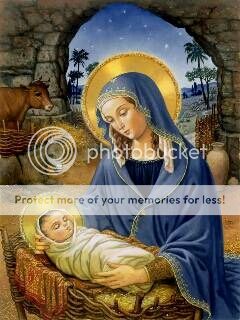
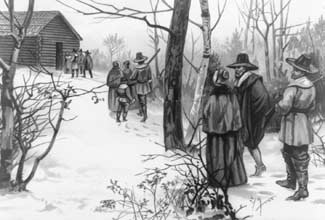
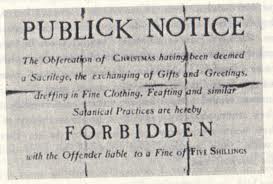
 *
*